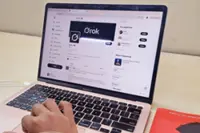If alopecia areata only affects a few patches of scalp, the hair can usually grow back on its own. — VisualHunt
Hair loss (also called alopecia) may not be as common in kids as in adults, but there are variety of reasons it may happen.
While it can be upsetting for both parents and children, the condition usually improves once the cause is identified and addressed.
There are different causes of hair loss in infants, children and teens.
The most common reasons depend on the child’s age.
In most cases, hair that is lost grows back on its own.
There are also treatments available for when the hair does not grow back.
Causes of hair loss
Hair loss is very common in newborns and young babies.
Almost all babies will have some – and possibly all – of their hair fall out during the first few months of life.
This is normal and to be expected; the hair will grow back.
Some babies will lose more hair on the back of their heads than from other parts of the scalp.
Don’t worry; this is not unusual and the hair grows back normally over a few months.
Hair loss in older children can have a variety of causes.
Some of the more common reasons a child or teen may lose hair include:
Examples include tight braids or frequent tight ponytails or buns.
This can cause hair loss, especially along the edges of the scalp at the front, sides and back.
This condition is called traction alopecia.
It can get better by changing to looser hair styles.
Avoiding caps and other things that constantly rub on the scalp can also help the hair grow back.
Physical stress (like high fever, hospitalisation or surgery) or emotional stress (like a death in the family, a new school or a new home) may cause more hair to fall out than normal.
This type of hair loss, called telogen effluvium, can happen over a few weeks or months.
The condition makes the hair seem thinner than it was before, but doesn’t cause bald patches or complete loss of hair.
Telogen effluvium hair loss gradually gets better on its own.
This child’s habit is called trichotillomania.
Many children who develop this behaviour often don’t even realise they are doing it.
Trichotillomania can cause the hair to break and fall out, leading to patches on the scalp with less hair than normal and broken-off stubble hairs.
Very young children tend to outgrow this habit.
Older children and teens may benefit from counselling and mental health care to break the habit.
A fungal infection can sometimes cause hair loss.
Ringworm is a fairly common fungus infection of the skin or the hair.
The medical terms for these infections are tinea corporis and tinea capitis respectively.
When this infection is on the scalp, the hairs break and fall out, and the skin can look irritated and flaky.
Treatment with an anti-fungus medicine given by mouth, i.e. orally, is necessary to clear this infection from the scalp.
This is an autoimmune disease that can affect people of any age, including children.
It happens when the immune system, which is supposed to protect us and fight germs, instead attacks the hair follicles and causes hair to fall out.
Alopecia areata shows up as round or oval bald spots on the scalp with completely missing hair, leaving smooth patches of skin.
Most of the time, alopecia areata is limited to a few patches, and the hair will regrow and fill in the patches.
Treatments for alopecia areata can help when the hair doesn’t regrow in a few months or a lot of the hair on the scalp is missing.
The first step in treatment is with creams, ointments or lotions, such as steroid medicines, applied to the bald spots to decrease the immune system activity in those areas.
If the hair loss is widespread, it can be more difficult to treat.
Luckily, new treatments are being studied all the time and some show good promise for more difficult cases of alopecia areata.
When to see the doctor
Most newborns and very young infants will lose hair after birth, so there’s usually no need to see a doctor beyond regular checkups for this.
However, do discuss any ongoing hair loss that’s affecting your child or teen with your paediatrician.
The doctor will look at your child’s scalp and do a physical exam to help determine the cause of the hair loss.
Sometimes, bloodwork may be ordered and sent to a lab.
For some children, a referral to a paediatric dermatologist may be needed. – By Dr Keri Wallace/American Academy of Pediatrics/Tribune News Service
Dr Keri Wallace is a general academic paediatrician with an interest in paediatric dermatology at the Connecticut Children’s Medical Center’s Primary Care Center and an assistant professor of paediatrics at the University of Connecticut School of Medicine in the United States.





